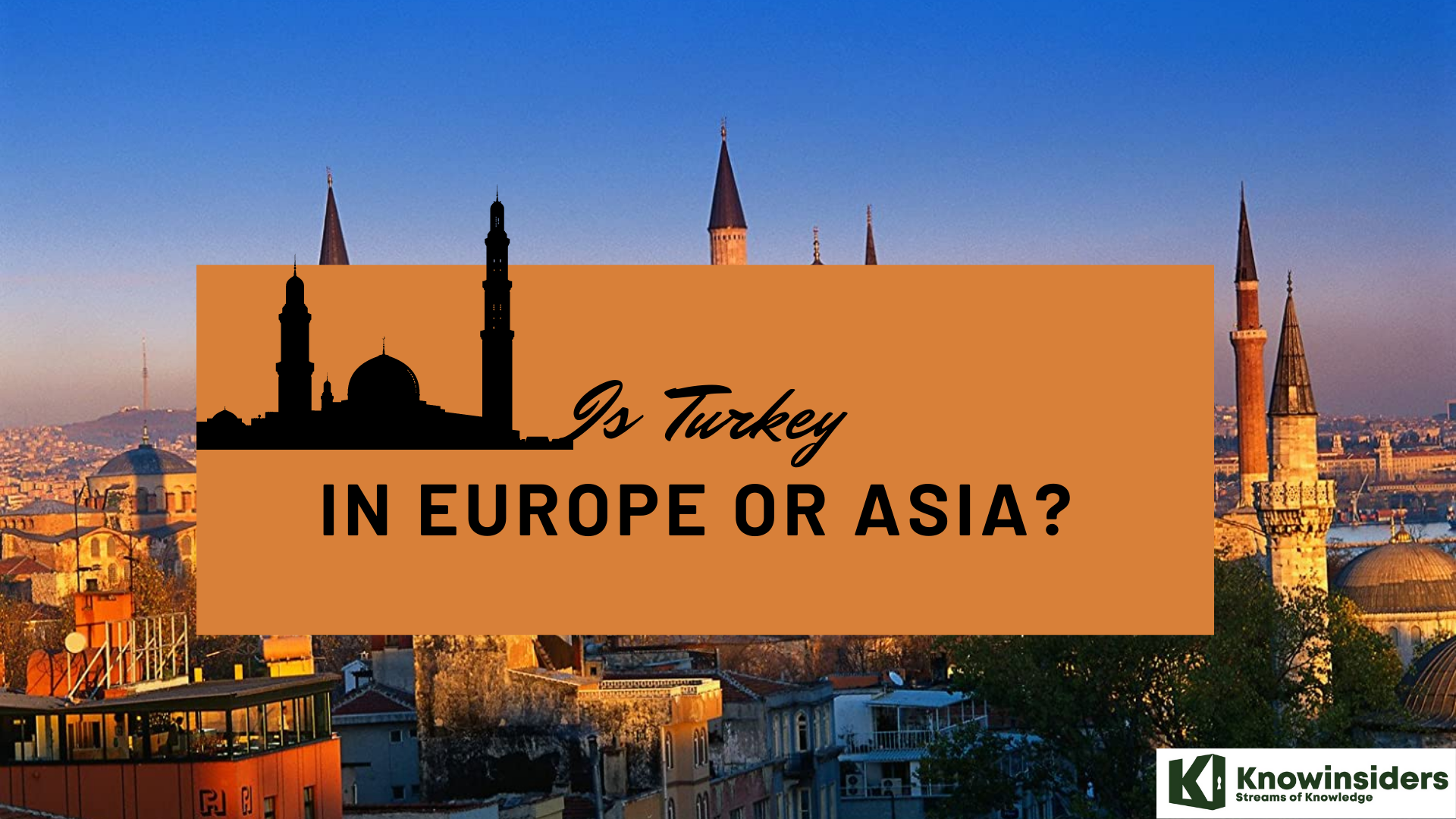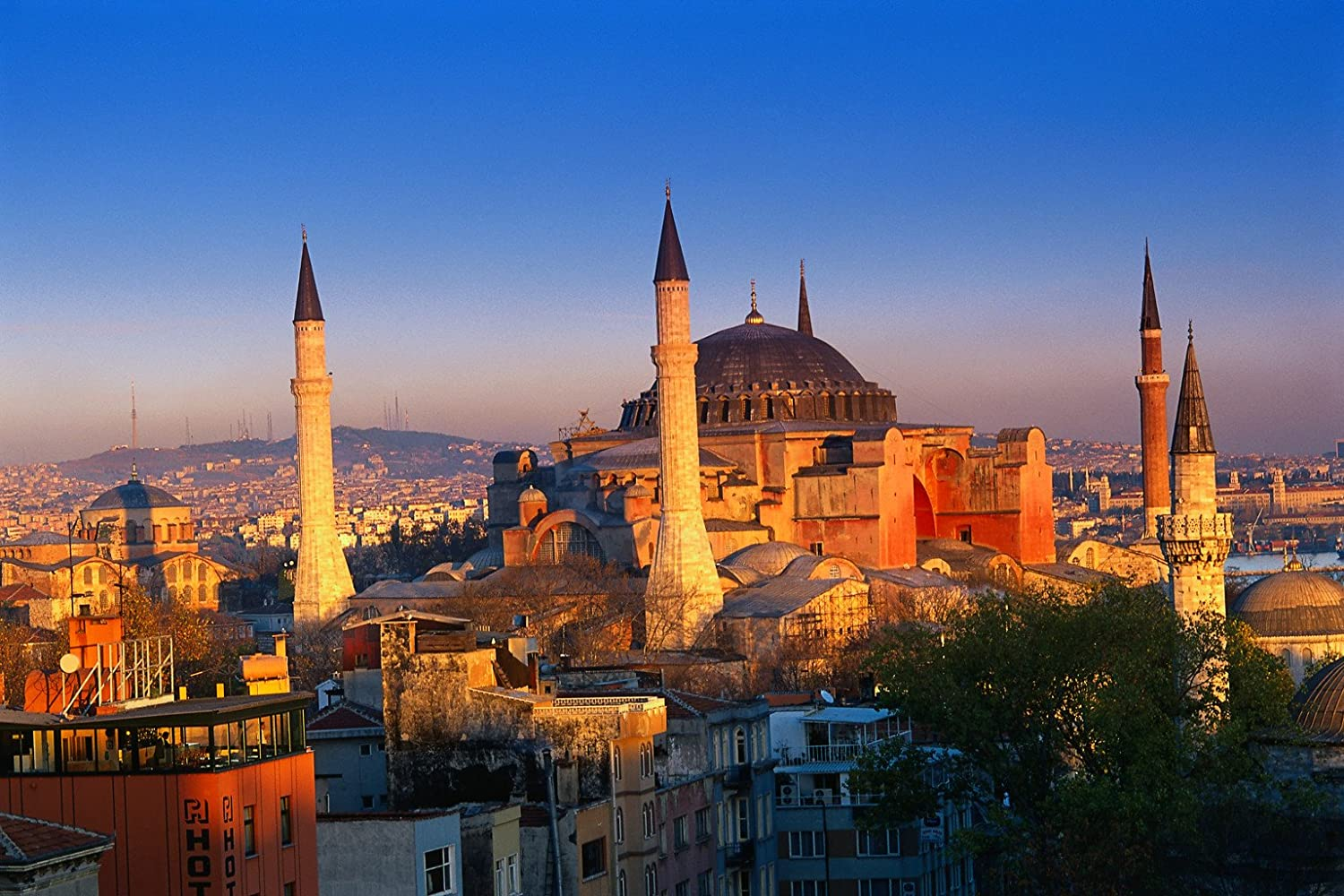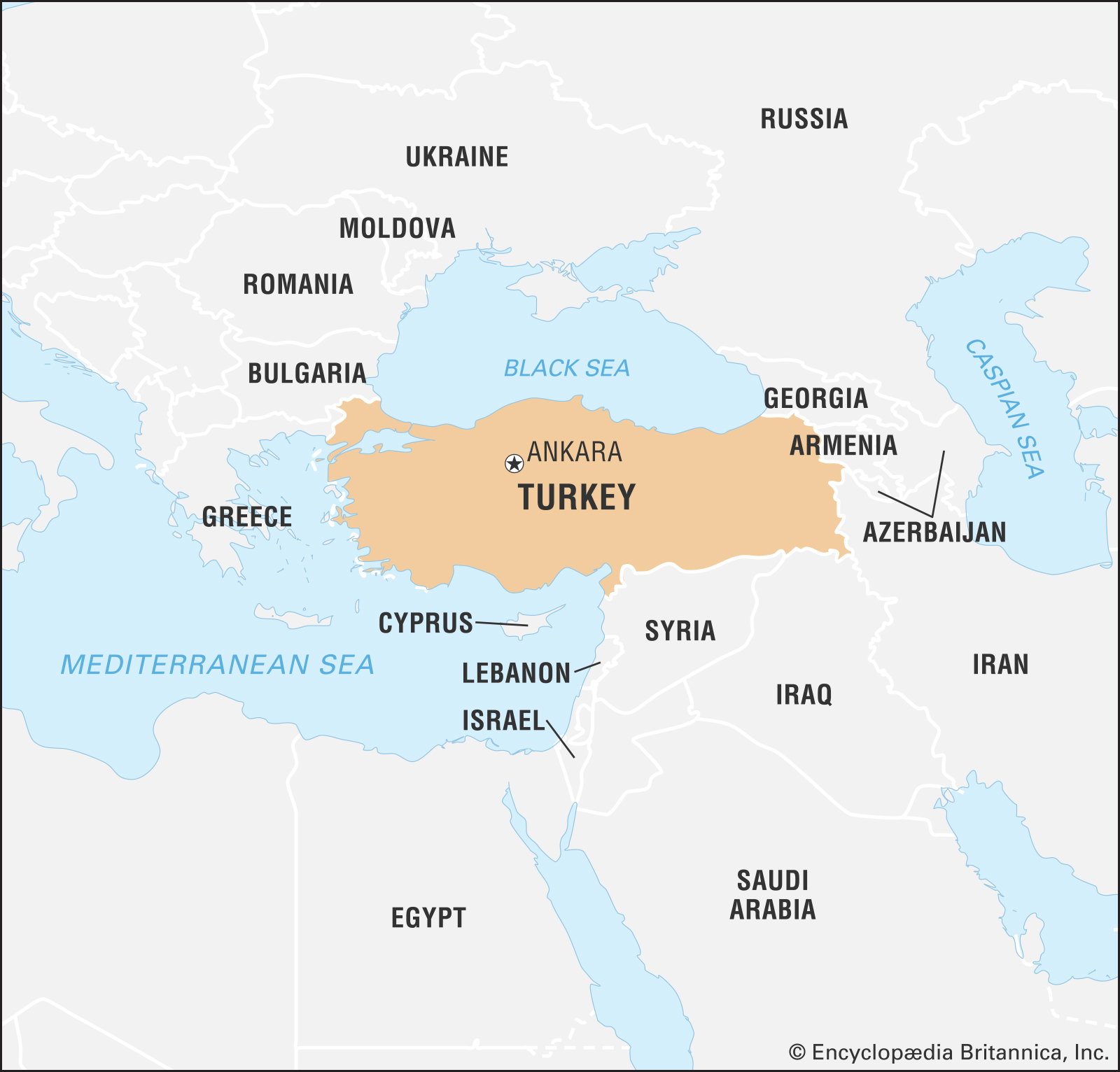Is Turkey In Europe Or Asia: A Transcontinental Country
 |
| Is Turkey in Europe or Asia? |
Asia, which is primarily found in the Eastern and Northern Hemispheres, is the biggest and most populous continent on Earth. It shares the continental landmasses of Eurasia and Afro-Eurasia with the continents of Europe and Africa, respectively. Asia makes up approximately 30% of the planet's land area and 8.7% of its total surface area, with a total area of 44,579,000 square kilometers (17,212,000 sq mi). Many of the earliest civilizations were located on the continent, which has long been the location of the majority of the human population. As of June 2019, it was home to 4.5 billion people, or roughly 60% of the world's population.
The entire continent of Europe is in the Northern Hemisphere, with the majority of it in the Eastern Hemisphere. It is made up of the westernmost peninsulas of Eurasia's continental landmass, and it is bordered by Asia to the east, the Arctic Ocean to the north, the Atlantic Ocean to the west, and the Mediterranean Sea to the south. The watershed of the Ural Mountains, the Ural River, the Caspian Sea, the Greater Caucasus, the Black Sea, and the waterways of the Turkish Straits are commonly thought to divide Europe from Asia. Despite the fact that a large portion of this border is over land, Europe is typically regarded as a full continent due to its enormous size and the significance of its history and traditions.
About Turkey: Is Turkey in Europe or Asia?
 |
| Photo: Getty Images |
Turkey is geographically located in both Europe and Asia.
Turkey's continental affiliation is a topic that is frequently contested. Although Turkey asserts that it is a fundamental component of Europe (supported by its historical legacy and by international alliances), many nations do not share this opinion, and Turkey has not yet been admitted to the European Union.
Bulgaria to the north-west, the Black Sea to the north, Georgia and Armenia to the northeast, Iran and Iraq to the east, Syria and the Mediterranean Sea to the south, Greece and the Aegean Sea to the west, and Iran and Iraq to the east are all borders that Turkey shares. Additionally, it has maritime borders with Romania, Cyprus, Egypt, Russia, and the Ukraine.
Asia Minor refers to the eastern part of Turkey, specifically the Anatolian peninsula, which is the westernmost part of Asia. Beyond the Bosporus, the country's eastern regions are located in Europe.
There are more than 79,814,870 people living in Turkey, which has an area of 302,455 square miles. Istanbul, one of Turkey's most populous cities, is located in Europe even though the majority of the country is in Asia.
The Territory Of Turkey
 |
| Photo: Britannica |
Turkey is located at the intersection of the Caucasus, the Middle East, the Balkans, and the eastern Mediterranean. In terms of population and territory, it is one of the larger nations in the area, and its land area is larger than any nation in Europe. The vast majority of the nation is located in Asia; it is made up of the oblong Asia Minor peninsula, also known as Anatolia (Anadolu), and, in the east, a portion of the mountainous area sometimes referred to as the Armenian Highland. Turkish Thrace (Trakya), the remaining portion of an empire that formerly covered much of the Balkans, is located in the extreme southeast of Europe.
The country stretches about 1,000 miles from west to east and between 300 and 400 miles (480 and 640 km) north to south. Turkey's borders are as follows: the Black Sea to the north, Georgia and Armenia to the northeast, Azerbaijan and Iran to the east, Iraq and Syria to the southeast, the Mediterranean Sea and the Aegean Sea to the southwest and west, and Greece and Bulgaria to the northwest. Istanbul is its largest city and seaport, and Ankara serves as the nation's capital.
A portion of Istanbul is situated in the European portion of Turkey, in the southeast of the Thrace region, which includes the European parts of Turkey, northeastern Greece, and Bulgaria. Bulgaria borders the Turkish portion of Thrace to the north, the Black Sea to the northeast, the Sea of Marmara to the south, Greece to the west, and the highly strategic Bosporus Strait to the east, which divides the European portion of Turkey from Anatolia. Interestingly, Istanbul, which has a population of more than 15 million, is thought to be the most populous city in Europe even though Anatolia, where some of the city is located, is technically part of Asia.
The Asian Origins Of The Turks
 |
| Photo: Dominican Abroad |
Turks started to appear on the outskirts of Asia Minor (Anatolia), which was then governed by the Greeks, in the 11th century. The Byzantine Empire and Armenia, the dominant states in Asia Minor, to the east, hired many Turks as mercenaries to serve under their rule. A Turkic state called the Seljuk Empire was established in 1037 in Central Asia, northeast of Iran, and it quickly conquered most of Persia, Iraq, and the Levant. The Seljuk Empire bordered Byzantine Asia Minor by 1060. The Turks were a minority, ruling over a Persian, Arab, and Kurdish majority, it should be noted.
The Fatimid Caliphate, based in Egypt, posed the biggest strategic threat to the Turks. At that time, the Turks supported Sunni Islam while the Fatimids, who were Ismaili Shi'a, controlled Jerusalem and Mecca. Their pawn was the Sunni Caliph in Baghdad. The Seljuk sultans were in charge at this point, and the Caliph had ceased to play any political role. Conflicts between sedentary citizens and nomadic rulers plagued this empire, as they did many others. Due to their restlessness and occasional raids on settled populations under Seljuk rule, many of the Turkic tribes living under Seljuk rule actually presented a challenge for the Seljuks. Many Turkic tribes and families were consequently relocated to the Seljuk Empire's borders, including those with the Byzantine Empire. Turkish invasions of Asia Minor started, which greatly irritated the Byzantines.
The Byzantines took control of Armenia in 1045. Due to the sporadic fighting there, their border with the Seljuks was not particularly strong or pacified. Furthermore, a lot of Armenians disliked the Byzantines and did not aid them in fending off Turkish raids. By 1071, the Byzantines had grown weary of Turkish raids and made the decision to send a sizable army to their borders in order to permanently end the Turkish threat. Unfortunately, they were better at manning border forts against sparsely armed tribal warriors, so this was not a particularly good plan. They also ran the risk of being completely defeated by attempting a pitched battle.
The Seljuk Turks did not want to provoke the Byzantines, either. Only tribes that were barely under central Seljuk control were raiding the Byzantines; their state apparatus was focused on Egypt. The Seljuk Sultan Alp Arslan was made aware of the threat from Asia Minor by Romanus IV Diogenes, the Byzantine Emperor, who moved some 40,000 troops to his eastern border. This threat had previously been nonexistent for the Seljuks. Thus, the Byzantines brought a Turkic army from Persia and Central Asia to Asia Minor by drawing the Turks' attention away from Egypt.
At Manzikert in eastern Turkey, where the Seljuk and Byzantine armies clashed, the Byzantines were routed. Given that it led to the eventual consolidation of Turkish power in Asia Minor, this conflict is arguably one of history's most important ones. The fact that units under the command of generals from different court factions in Constantinople simply failed to appear for the battle despite being nearby and then returned home suggests that the Byzantines lost it through treachery.
Emperor Diogenes was captured by Sultan Alp Arslan and given enticing terms before being released. However, a civil war between Diogenes and other heir apparents broke out in the Byzantine Empire not long after, and several generals violated his treaty with the Turks. Due to the absence of soldiers, the Turks had good reason to occupy Asia Minor. By 1081, they had reached Constantinople's other side of the Bosphorus Strait. Although the Byzantines and Crusaders later reclaimed some of their lost territory in Asia Minor, Turkey remained in charge of the majority of the region ever since.
Turkey And European History
Turkey currently occupies a relatively small portion of Europe, but it once controlled a sizable portion of the continent, making Turkish history a component of European history. The Ottoman Empire was in power at the time. The entire Balkan Peninsula had been conquered by the Turkish Ottoman Empire at its height. The Ottoman Empire started to decline in 1683 when the Turks advanced to the outskirts of Vienna, the present-day capital of Austria, but were ultimately routed. Except for the portion of Thrace that is still a part of Turkey today, the Ottoman Empire had lost nearly all of its territory in Europe by the early 20th century. Nevertheless, the demographics of modern-day Europe were significantly influenced by the Turks.
Turkey’s European Ties Remain
 |
| Photo: World Travel Guide |
Despite losing control over sizable portions of Europe, Turkey left behind a legacy that will endure. For instance, the Ottoman Empire was largely responsible for the spread of Islam throughout Europe. As a result, some people still practice Islam in Europe today, most notably in Albania and a small portion of Bosnia and Herzegovina.
At the same time, particularly in the last century, European culture has migrated into Turkey. The Ottoman Empire fell during World War I, and Mustafa Kemal Ataturk, the new president of Turkey, made the decision to westernize the nation. A contemporary, secular republic was established after the dissolution of the previous Ottoman Empire's Islamic Caliphate. Turkey even replaced the Arabic writing system for the Turkish language with a Latin one. Turkey would align itself politically and economically with the West for the following 100 years.
Biodiversity of Turkey
Turkey has a remarkable ecosystem and habitat diversity, which has resulted in significant species diversity. Since the invention of agriculture, many plants have been cultivated for food; many of these plants' wild ancestors still grow in Turkey. Anatolia is the native land of many of these plants. Turkey's fauna is more diverse than its flora in terms of variety. There are roughly 60,000 animal species in all of Europe, but over 80,000 in Turkey (more than 100,000 if you count the subspecies).
While the Caucasus mixed forests extend across the eastern end of the range, the Northern Anatolian conifer and deciduous forests make up the majority of the Pontic Mountains in northern Turkey. Eurasian wildlife inhabits the area, including the Caucasian black grouse, red-fronted serin, golden eagle, eastern imperial eagle, lesser spotted eagle, and wallcreeper. The Euxine-Colchic deciduous forests, one of the few remaining temperate rainforests in the world, are located along a slender stretch of coastline between the Pontic Mountains and the Black Sea. The Pinus brutia, also known as the Turkish pine, is primarily found in Turkey and other east Mediterranean nations. Other Pinus (pine) species that are frequently found in Turkey include the nigra, sylvestris, pinea, and halepensis. Turkey is home to the Turkey oak (Quercus cerris) and a large number of other oak species. The orientalis is the species of the Platanus (plane) genus that is most frequently encountered. Anatolia is home to several wild tulip species, and in the 16th century, specimens from the Ottoman Empire were used to introduce the flower to Western Europe.
Turkish national parks include the Gallipoli Peninsula Historical National Park, Mount Nemrut National Park, Ancient Troy National Park, lüdeniz Nature Park, and Polonezköy Nature Park. There are also 189 nature parks, 31 nature preserve areas, 80 wildlife protection areas, and 109 nature monuments. Threats to biodiversity in the twenty-first century include Turkey's desertification as a result of climate change.
In the northeastern and southeasterly parts of Turkey, Anatolian leopards are still occasionally spotted. Other felid species that are currently present in Turkey's forests include the European wildcat and the Eurasian lynx. Up until the second half of the 20th century, the now extinct Caspian tiger roamed the easternmost parts of Turkey.
The Angora cat, Angora rabbit, and Angora goat are well-known domesticated animals from Ankara, the capital of Turkey, as is the Van cat from Van Province. The Kangal (Anatolian Shepherd), Malakl, and Akbaş are the national dog breeds.
 Facts About Landlocked Countries in The World Facts About Landlocked Countries in The World Landlocked countries have some very unique issues that they have to deal with. In this article, we're going to explore the definition of landlocked countries ... |
 What Is The Biggest and Smallest State in the US? What Is The Biggest and Smallest State in the US? What state is the biggest in the US? That’s a big question. Read on this article and you will find the answer. |
 What Is the Official Language Of The U.S - Top 10 Most Common Languages What Is the Official Language Of The U.S - Top 10 Most Common Languages Most of people in the US speak English but do you know English is not the official language of this country. So what is the ... |
 What Is Your Love Style Based On Zodiac Signs? What Is Your Love Style Based On Zodiac Signs? What can your zodiac signs tell you about your love style? Believe it or not, read on for all the big reveals. |


























